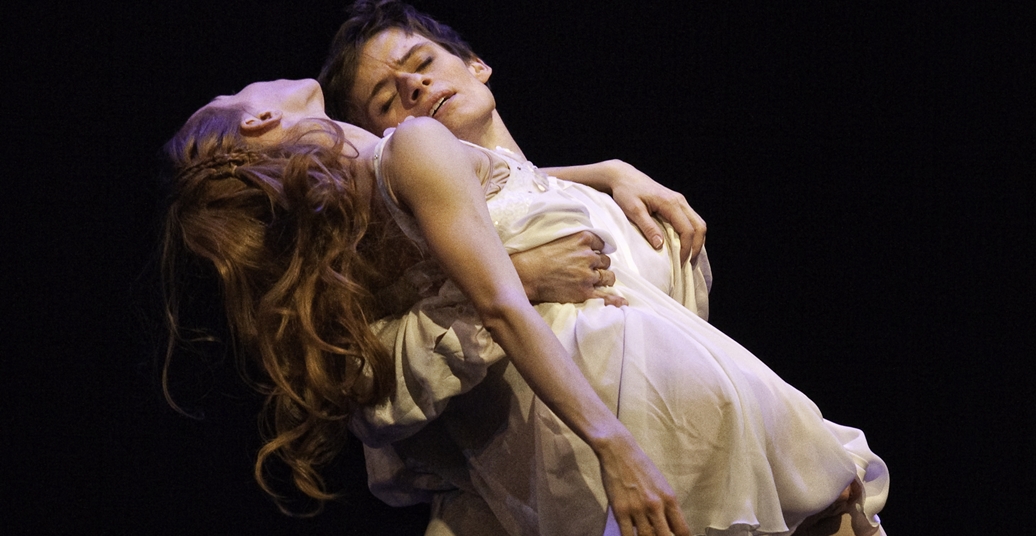The Staatsballett Berlin dances John Cranko’s “Romeo and Juliet”, a layer cake of virtuosic duos, festive dances, and group chaos.
As a child, my favourite version of “Romeo and Juliet” was Sir Kenneth McMillan’s, with countless views of Fonteyn and Nureyev’s incomparably captivating movements spun out across the screen. There was something particularly visceral about these movements; a biting interpretation of choreography which seemed to go above and beyond its own rules, like colouring in a bloody red just outside the lines. Juliet’s arms didn’t hover, but whipped their way into Romeo’s body. Her jumps sometimes crumpled to the floor. Romeo’s leaps were never perfect, but rather full of risk and provocation, leaving one unsure as to whether he would make it to where he was going. There was nothing like it.
But, of course, fascinatingly, there is. St Petersburg’s Kirov Ballet originally commissioned Prokofiev to write the illustrative music, and in the 1940’s, premiered a production from Leonid Lavrovsky, followed post-war by several versions including those from Frederick Ashton (1955), John Cranko (1962), MacMillan (1965), and Rudi van Dantzig (1967). And the story has continued to be reworked since by choreographs including John Neumeier, Rudolph Nureyev, and Alexei Ratmansky. As such, there are, in fact, many Romeos and many Juliets who do slightly similar and profoundly different things to Prokofiev’s score all over the world. As a ballet student, I regularly watched Rudi van Dantzig’s version, which — having already given allegiance to MacMillan — I found, perhaps unfairly, somewhat lacking by comparison (it didn’t help that the costumes for many years came with especially puffy, and thus hardly romantically credulous, sleeves). One viewer’s “Romeo and Juliet” is not necessarily another’s.
Thus, despite a long and emotional relationship with R&J, I hadn’t seen a rendition — live or on film — for some years when this week I stepped into the Deutsche Oper Berlin to see the Staatsballett perform. John Cranko’s choreographic interpretation — danced masterfully by Elisa Carrillo Cabrera and Mikhail Kaniskin — is nearly three hours long, and a narratively committed and musically illustrative journey. Once you sort out who is who (and it isn’t too tricky), the story is easy to follow; there aren’t any surprises or even visual counterpoints to the music: everything works together. A big sound? A big movement. Tiny sounds? Tiny feet. Wobbly ripples? Goofy hip shakes. It’s all a little bit cartoonish: more easily legible than wrenchingly emotional.
So what was it, then, that brought the crowd to four (or five — I lost count) curtain calls at the end? There were three factors that brought a strange mixture of beauty, pathos, and entertainment to the piece: virtuosic duets, group fun, and chaos. Through the development and switching between these aspects, a strong image of two untouchable young lovers is delivered amidst greater dance entertainment and the sheer ebullience of a crowd. We stay on the surface of things, so that even though we move through a classic tragedy, we do so with a light touch.
Virtuosic duets: like most versions of “Romeo and Juliet”, Cranko’s has its demandingly virtuosic moments, not least in solos, Montague boy trios, and, of course, the romantic duets. Romeo and Juliet leap and soar, twist and elide, suspending themselves and each other in the air. Clothed in white against a dark backdrop, the milky flow of their two forms is entirely stunning. They seem to live in a world apart, but even so, it’s exhilarating to see a boy fall so hard for a girl, and to watch a girl be so mischievous and so achingly resolute.
Group fun: the group dances are just really, really fun. Whether it’s the playful and absurd acrobatics of the market jesters or the striking and slightly macabre court dances full of status and arched backs, there’s something beautifully kinesthetically enjoyable about the sequences Cranko creates involving six dancers or more. They look fun to dance, and they are certainly fun to watch.
Chaos: let’s set the scene – the market is a mess, merchants bustle to and fro with their wares, while youths in pretty, sun-faded fabrics, carried away with greetings and gossip, idly block their path. A few startlingly pretty women dressed in bright skirts — likely local prostitutes — mingle playfully with the crowd. Old ladies trade herbs and potions. I try to pick out my protagonist, but between the shifting mass of bodies it isn’t easy! There’s a lot of milling about, a lot of joking around, and clear moments of improvisation. It’s rare and it’s fun to see that many bodies on stage having a good time. It’s great to see so much chaos in a ballet. Simply put: we’re at a party.




